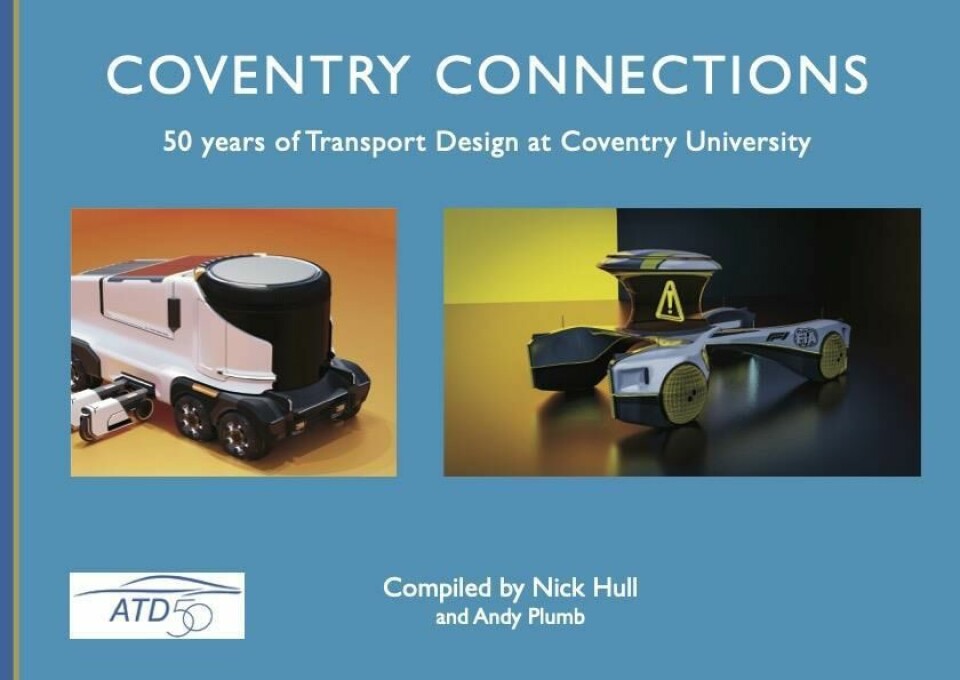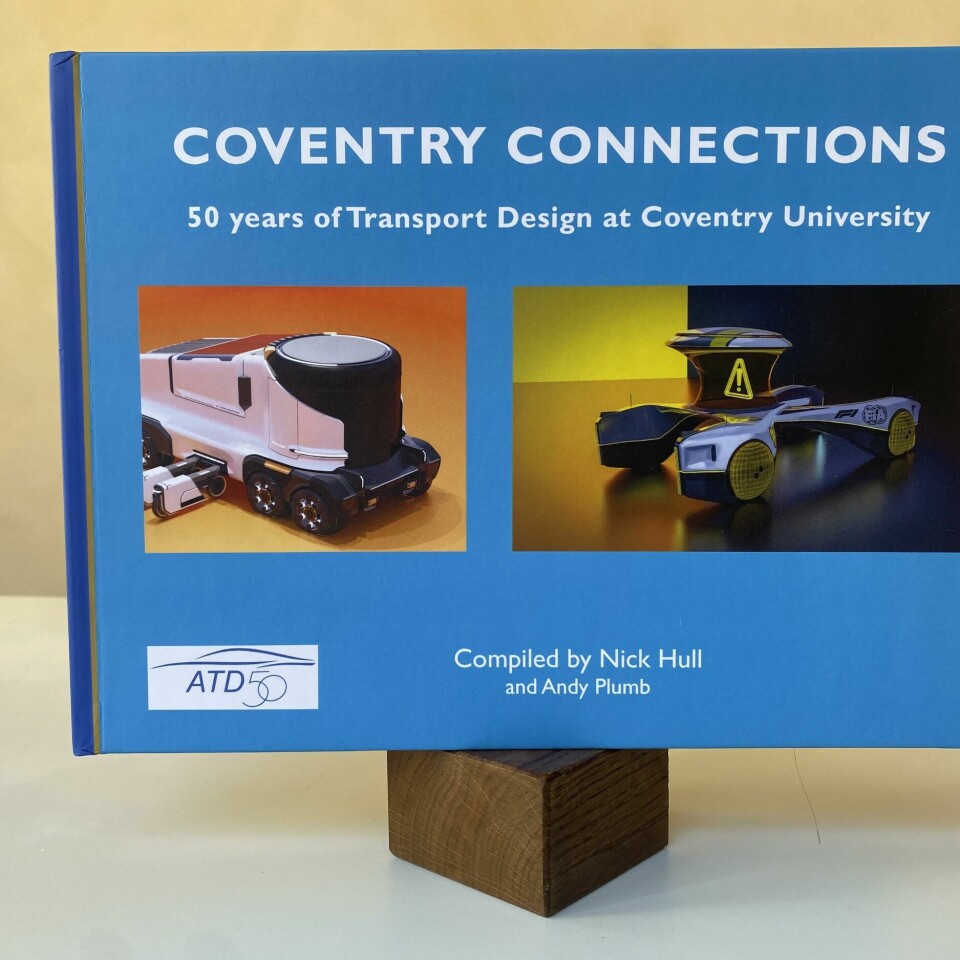
Review: Coventry Connections – 50 years of Transport Design at Coventry University
It is half a century since students began learning the art of car design at Coventry University. A lovingly compiled book by Nick Hull and Andy Plumb celebrates 50 years of the course
“When my own career in design started…there was nowhere teaching design that had any slant towards the automotive sector as it was not considered serious design. It was thought to be cosmetic, a titivation of things engineering.”
The words of Roy Axe, design director of the Austin-Rover Group, as quoted in Coventry Connections – a book which charts 50 years of the Automotive and Transport Design course at Coventry University written and compiled by Nick Hull with help from Andy Plumb.
As projects go, author and subject could not be more closely aligned. A former car designer at Jaguar Land Rover and interior chief at Honda, Hull has taught the course since 2002 and, like others before him, has played a significant role in redressing the power balance between design and engineering.
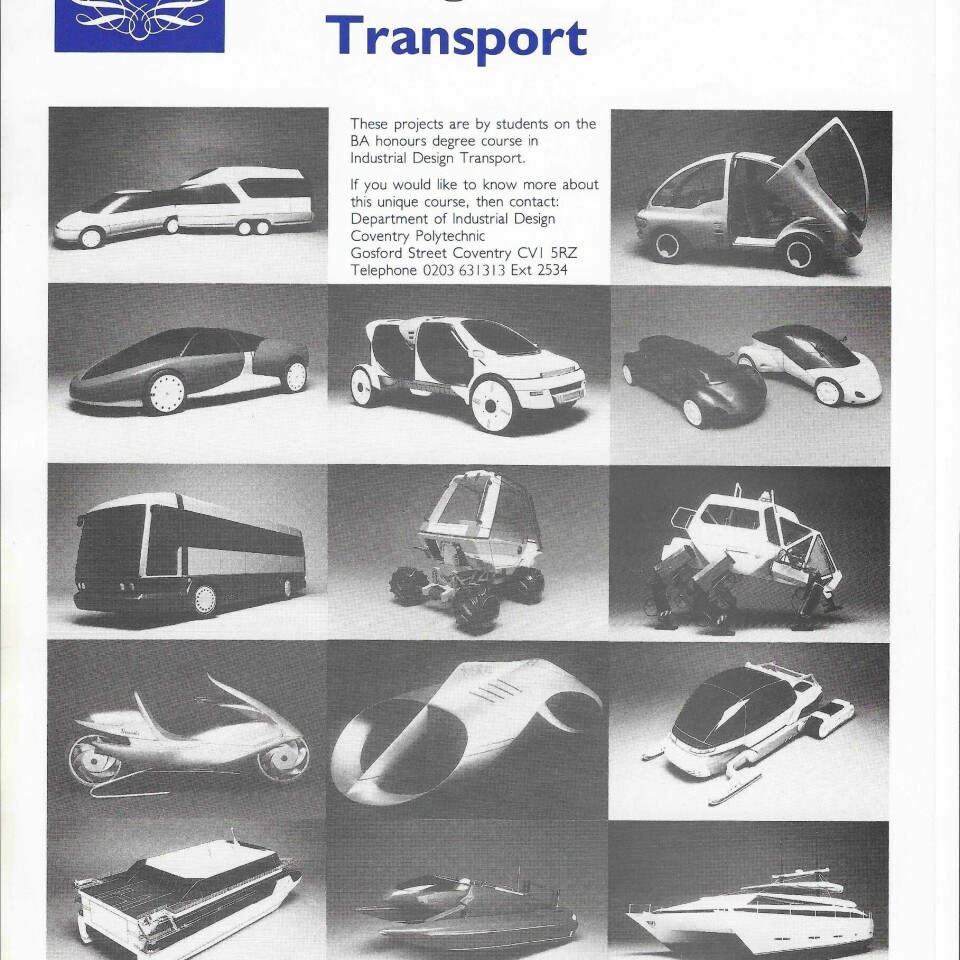
Hull and Plumb have told the 50-year story chronologically, but have helpfully broken it down into digestible chunks that encourage the reader to dip in and out of various eras and subjects. Opening up at random, anything from cardboard modelling to student nightlife could greet you from the page. That is not to say the book is without rigour, far from it.
The early chapters detailing the origins of the course, entwined with the redevelopment of the bombed out city itself, make for fascinating reading. The new buildings that emerged from the wreckage of the city to form the new Lanchester College Campus – none more hopeful than Basil Spence’s modernist cathedral – made real the aspirations of a forward-looking local populace that soon pulled in those with equal optimism.
Russell Carr, the respected Lotus designer, is pictured in a 1988 class photo: mulleted and brimming with enthusiasm
The aforementioned Axe is but one of the illustrious names that had a strong relationship with the course, which, by the time the great man was at the helm of ARG, had been running eight years. Nevertheless, you suspect that a young Axe, who was part of a generation of British and European designers who had to forge their own path, would have given his teeth to have studied at Coventry. Nevertheless, Axe was to play a key role in establishing a pipeline of graduates entering the professional ranks before the demise of the British car industry made it necessary to look abroad.
Back in 1974, design was subservient to engineering, particularly this side of the Atlantic. The newly formed Lanchester Polytechnic – an amalgamation of Lanchester College of Technology, Coventry College of Art and Rugby College of Engineering – aimed to put designers on a more equal footing.
Given the roots of the course lay in engineering, the early days saw a heavy focus on the pragmatic side of the automotive business: students were expected to be well-versed in computer science and fluid mechanics. Creativity, sketching and ideation, came second.
This lent an inventive freewheeling charm to the early work reflected in Coventry Connections: motorised barstools (a side project that was pure Heath Robinson), go-karts, street sweepers and ‘Hostess’ trolleys featured. It wasn’t until the late 70s early 80s, in response to some pretty brutal industry feedback, that the course began to push aesthetics, styling and, above all, ideas. With guest lectures by studio designers, the effect was soon felt: a black and white shot of the 1980 prospectus depicts concepts closer to what could be found in contemporary college literature.
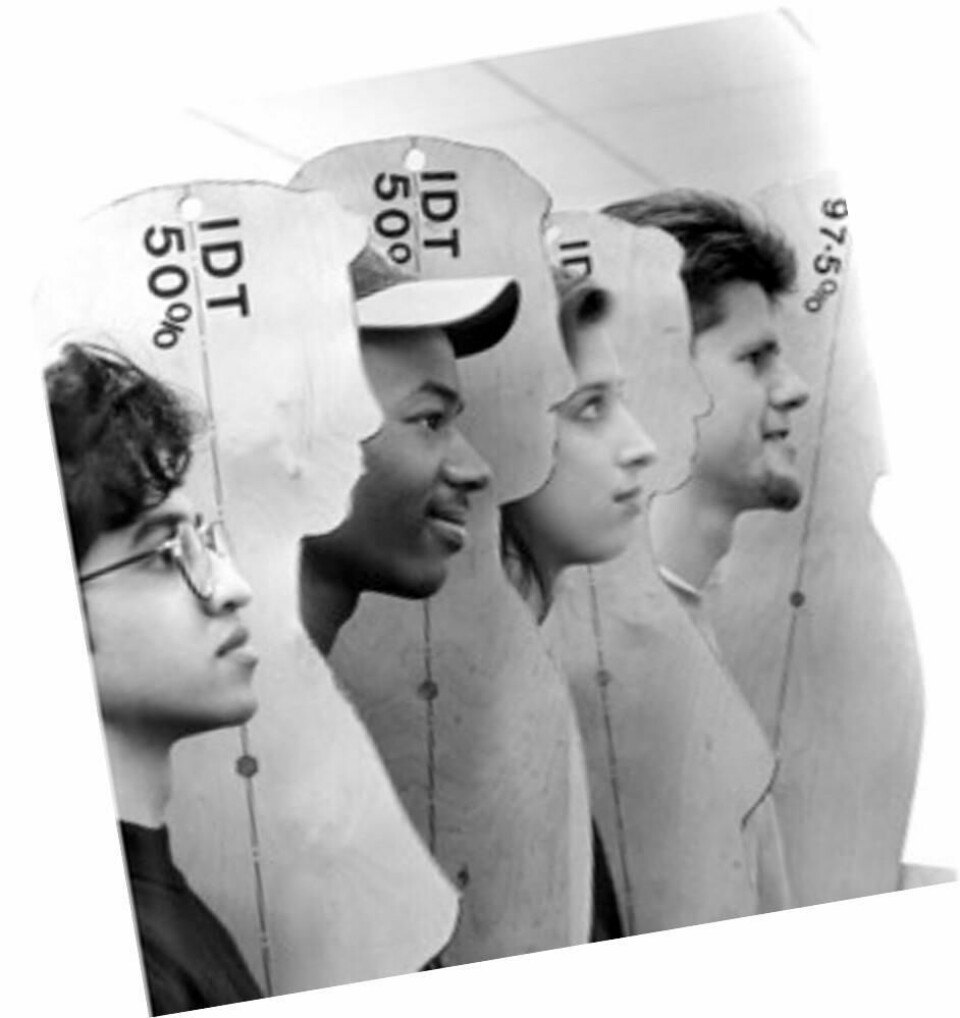
As the course grew, so too did the skills taught: modelling and aerodynamics became key features in the early part of the decade, the latter precipitated by the 1979 Oil Crisis, which made efficiency a premium for consumers.
It is around this time that familiar contemporary names begin to appear in the book: Russell Carr, the respected Lotus designer, is pictured in a 1988 class photo: mulleted and brimming with enthusiasm. Another photo shows a fresh-faced Klaus Busse, impossibly tall alongside his fellows.
In the early 90s, Coventry Polytechnic became Coventry University and delivered projects that have become lore. The improbable Concept 2096 (The Slug), which would not look out of place in a Star Wars flick, and the more realistic Coventry Lightweight Sports Car. Both were early forays into the world of computer-based 3D modelling, marking another paradigm shift in the design process. Traditional clay modelling skills were nevertheless nurtured in parallel with the new technology, which placed Coventry at the leading edge of modelling talent.
Among the industry figures who followed this pathway was Lisa Reeves, who got her start as an Alias modeller at JLR and is now head of interiors for Volvo. Indeed, those connections to the industry should not be underestimated. It came as a blow to the course when, as student numbers swelled in the mid-00s, the industry was hit by the financial crisis: GM offloaded Vauxhall and Opel, while Honda and Mitsubishi closed their European outposts in 2012. Internships and job opportunities dried up.
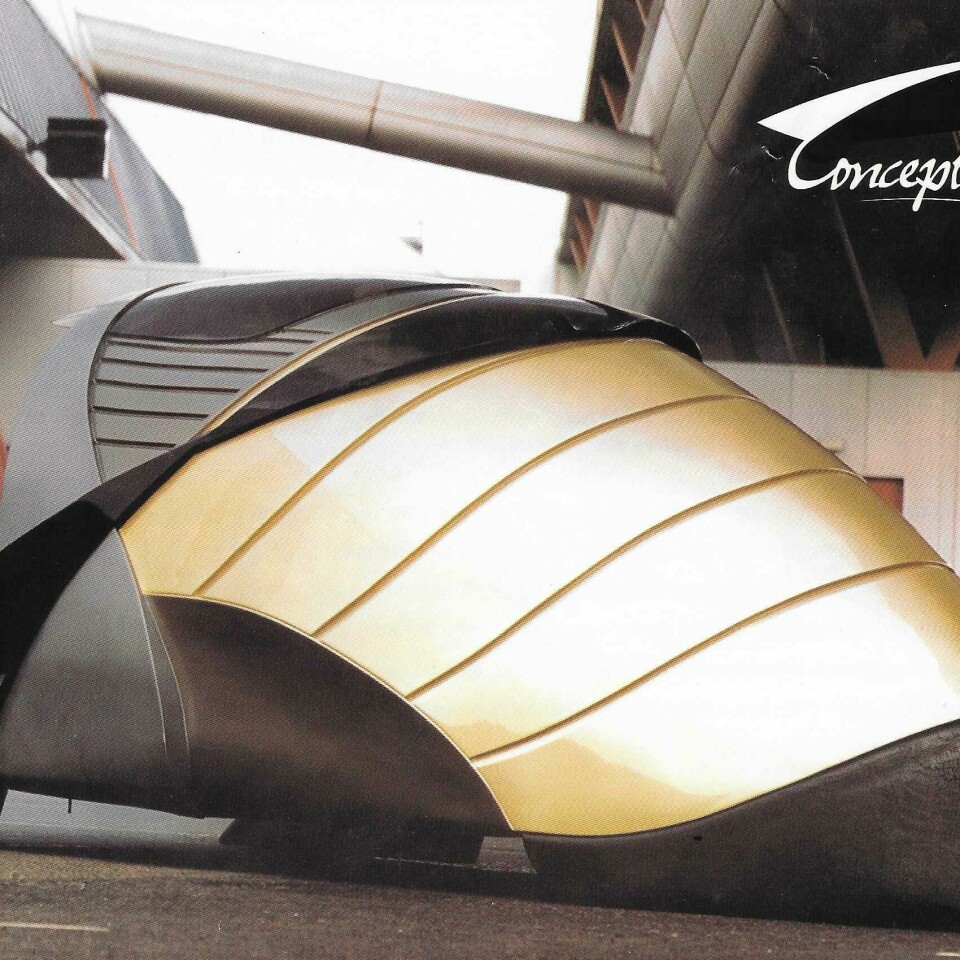
Longstanding tutor Brian Clough bowed out at this stage, retiring in 2018 after nearly 20 years. Others served even longer terms: David Browne putting in 32 years, John Owen joined in 1990 and handed in his badge in 2016. It is testament to the hold Coventry had on those lucky enough to study or teach there: once you were in, you didn’t want to leave.
With the retirement of Nick Hull, it feels well and correct to take a moment or two
But, as the book shows, it was not all about work. Sections are given over to the social life around the University: alumni will surely savour the hazy memories prompted by archival shots of the Phoenix or the Lady Godiva pubs. Some of those establishments are no longer with us, the general sanitising of certain areas of student life has robbed us of the grubbier charms of extracurricular activities.
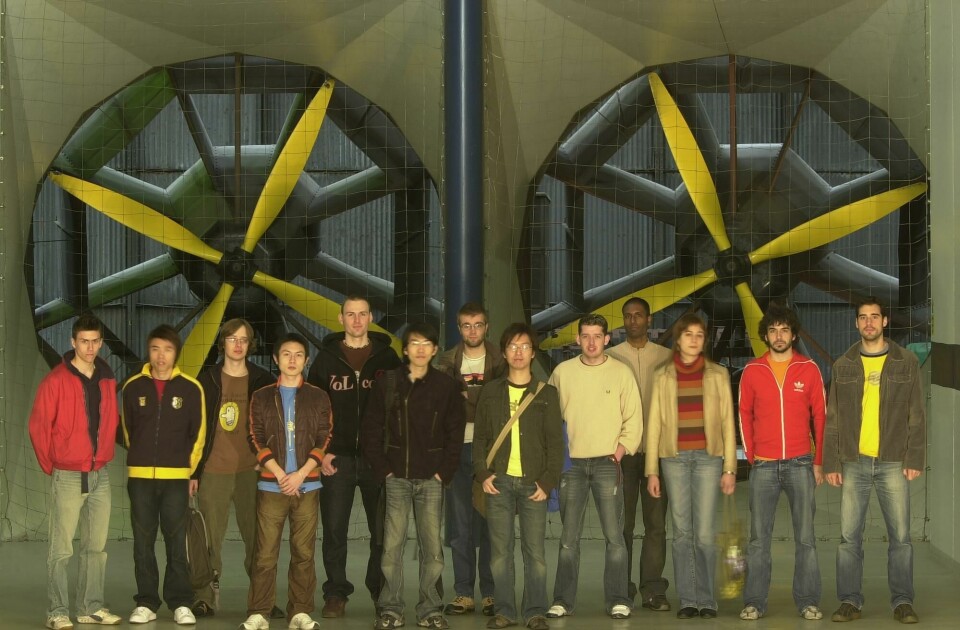
Wonderful archive shots are peppered throughout – a heroic 1983 shot of students Mark Walters and Francois LeComte testing a monocycle is a worthy chapter opener. There are some lovely anecdotes from former students, brought to life by some great sketches, including from co-author Plumb. It all underlines the sheer love of car design the graduates clearly felt.
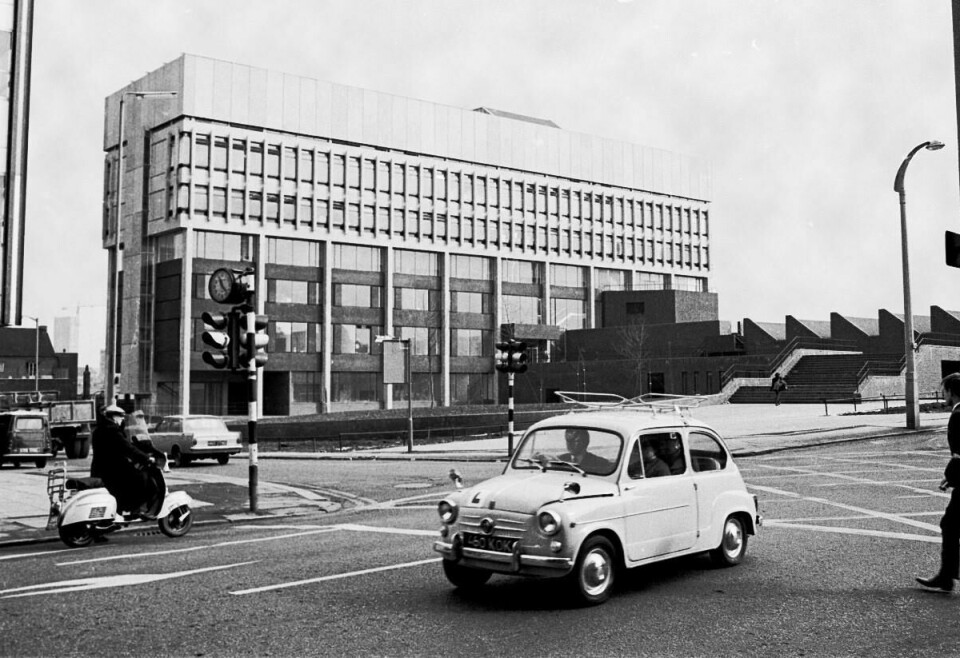
In 2023, the BDP-designed Delia Derbyshire building opened ushering in a new modern era for Coventry. The bright atrium, architecturally-speaking worlds away from the beloved, brutalist slabs that defined the old University, was the setting for the Coventry Connections book launch and accompanying exhibition. The night had a typically congenial atmosphere, but one has to wonder whether the book is closing, metaphorically speaking, on an era that centred around a love of the car as an object in itself.

Laudably, the course has stuck to its guns as a place where students learned car design, rejecting the impulse to rebrand, as many OEMs seem hellbent on doing, as mobility solution providers (whatever that means). Evidence comes in the foregrounding of modelling skills and sketching, alongside the mastery of digital tools.
But we are in a moment where the younger generations of the developed world are falling out of love with the car. How Coventry addresses this question will undoubtedly be interesting, but that is for the new guard. With the retirement of Hull, it feels well and correct to take a moment or two. Coventry Connections: 50 years of Transport Design at Coventry University does just that.
Coventry Connections: 50 years of Transport Design at Coventry University is published by Lead-in-Design and is avaliable to buy here
